Showing Spotlights 2185 - 2192 of 2783 in category All (newest first):
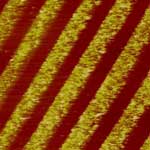 The use of spontaneous self-assembly as a lithography- and external field-free means to construct well-ordered, often intriguing structures has received much attention for its ease of organizing materials on the nanoscale into ordered structures and producing complex, large-scale structures with small feature sizes. These self-organized structures promise new opportunities for developing miniaturized optical, electronic, optoelectronic, and magnetic devices. An extremely simple route to intriguing structures is the evaporation-induced self-assembly of polymers and nanoparticles from a droplet on a solid substrate. However, flow instabilities within the evaporating droplet often result in non-equilibrium and irregular dissipative structures, e.g., randomly organized convection patterns, stochastically distributed multi-rings, etc. Therefore, fully utilizing evaporation as a simple tool for creating well-ordered structures with numerous technological applications requires precise control over several factors, including evaporative flux, solution concentration, and the interfacial interaction between solute and substrate.
The use of spontaneous self-assembly as a lithography- and external field-free means to construct well-ordered, often intriguing structures has received much attention for its ease of organizing materials on the nanoscale into ordered structures and producing complex, large-scale structures with small feature sizes. These self-organized structures promise new opportunities for developing miniaturized optical, electronic, optoelectronic, and magnetic devices. An extremely simple route to intriguing structures is the evaporation-induced self-assembly of polymers and nanoparticles from a droplet on a solid substrate. However, flow instabilities within the evaporating droplet often result in non-equilibrium and irregular dissipative structures, e.g., randomly organized convection patterns, stochastically distributed multi-rings, etc. Therefore, fully utilizing evaporation as a simple tool for creating well-ordered structures with numerous technological applications requires precise control over several factors, including evaporative flux, solution concentration, and the interfacial interaction between solute and substrate.
Jul 16th, 2008
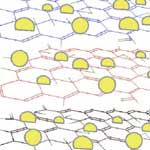 The electrical properties of graphene have been the topic of recent interest from various disciplines because this novel carbon material offers exciting opportunities to develop nanocomposites with unusual electronic catalytic properties. Most of these studies involve mechanical peeling of individual graphene sheets - one at a time - from a block of graphite. The requirement to obtain graphene as individual sheets and to maintain it in the reduced form introduces a certain level of complexity into the process of designing composite systems where, for instance, semiconductor or metal nanoparticle are anchored on graphene sheets. Without some form of intervention, the strong van der Waals interactions between reduced graphene sheets would cause them to collapse and aggregate. Researchers have now developed a simple photocatalytic method to anchor semiconductor nanoparticles on a single sheet of graphene using a solution-based process.
The electrical properties of graphene have been the topic of recent interest from various disciplines because this novel carbon material offers exciting opportunities to develop nanocomposites with unusual electronic catalytic properties. Most of these studies involve mechanical peeling of individual graphene sheets - one at a time - from a block of graphite. The requirement to obtain graphene as individual sheets and to maintain it in the reduced form introduces a certain level of complexity into the process of designing composite systems where, for instance, semiconductor or metal nanoparticle are anchored on graphene sheets. Without some form of intervention, the strong van der Waals interactions between reduced graphene sheets would cause them to collapse and aggregate. Researchers have now developed a simple photocatalytic method to anchor semiconductor nanoparticles on a single sheet of graphene using a solution-based process.
Jul 15th, 2008
 Electrometers are instruments that measure electric charge or electrical potential difference by means of electrostatic force. While early electrometers such as developed by Lord Kelvin in the 19th century were crude instruments, modern electrometers based on solid state technology are high-precision electronic devices that, in extreme cases, are so sensitive they can count individual electrons as they pass through a circuit. As the dimensions of electronic devices shrink further, the probes required to measure the voltage inside a miniature conductor have to be miniaturized, too. An alligator clip cannot be scaled down indefinitely to perform such tasks. Furthermore, as devices reach the nanoscale, the perturbation of the measurement on the device itself cannot be neglected and must be assessed. A few techniques, many of which are based on scanning a small object such as an atomic force microscope (AFM) tip, have been developed in the past to address this challenge. Each technique has its pros and cons.
Electrometers are instruments that measure electric charge or electrical potential difference by means of electrostatic force. While early electrometers such as developed by Lord Kelvin in the 19th century were crude instruments, modern electrometers based on solid state technology are high-precision electronic devices that, in extreme cases, are so sensitive they can count individual electrons as they pass through a circuit. As the dimensions of electronic devices shrink further, the probes required to measure the voltage inside a miniature conductor have to be miniaturized, too. An alligator clip cannot be scaled down indefinitely to perform such tasks. Furthermore, as devices reach the nanoscale, the perturbation of the measurement on the device itself cannot be neglected and must be assessed. A few techniques, many of which are based on scanning a small object such as an atomic force microscope (AFM) tip, have been developed in the past to address this challenge. Each technique has its pros and cons.
Jul 14th, 2008
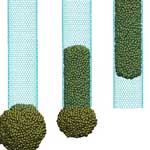 Various techniques are being developed to enhance the already impressive properties of carbon nanotubes (CNTs) further by combining them with other materials. We have covered plenty of examples in our Spotlights. For instance, encapsulating carbon nanofibers with CNTs transforms cheap commercial carbon nanotubes into highly efficient carbon for electrochemical energy storage applications. Another study demonstrated that the redox properties of iron and iron oxide particles are tunable via encapsulation within CNTs, suggesting that a host-guest interaction between the confined metal particles and CNTs, which is different from that on the outside of the nanotubes. Researchers are still busy trying to understand some of the CNT basics, for instance something as fundamental as 'how do nanotubes grow'? How can their various properties - electronic, transport, or mechanical - be modified? Or how can you make use of CNT's structure and properties to build novel nanotools. A new model demonstrates that sufficiently small liquid metal droplets can be drawn inside a CNT via capillary action.
Various techniques are being developed to enhance the already impressive properties of carbon nanotubes (CNTs) further by combining them with other materials. We have covered plenty of examples in our Spotlights. For instance, encapsulating carbon nanofibers with CNTs transforms cheap commercial carbon nanotubes into highly efficient carbon for electrochemical energy storage applications. Another study demonstrated that the redox properties of iron and iron oxide particles are tunable via encapsulation within CNTs, suggesting that a host-guest interaction between the confined metal particles and CNTs, which is different from that on the outside of the nanotubes. Researchers are still busy trying to understand some of the CNT basics, for instance something as fundamental as 'how do nanotubes grow'? How can their various properties - electronic, transport, or mechanical - be modified? Or how can you make use of CNT's structure and properties to build novel nanotools. A new model demonstrates that sufficiently small liquid metal droplets can be drawn inside a CNT via capillary action.
Jul 11th, 2008
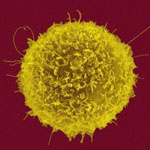 Scientists consider the exploration of carbon nanotubes (CNTs) for biomedical applications as a field with significant potential, leading to applications where CNTs could act as magnetic nano-heaters, drug-carrier systems and sensors which allow a diagnostic and therapeutic usage on a cellular level. The EU, for instance, has funded a four-year nanotechnology research program that studies the chemical and physical properties of CNTs in order to find mechanisms which can be applied for a biomedical purpose in appropriate medical devices. Studies of their interaction with biological environments (immune response, toxicity, interaction with the single cell) will provide the basis for applying the CNT for imaging (nanoparticles-based contrast agents), sensoring (nanoparticles-based diagnostics) and cancer treatment (hyperthermia, nanotechnology-based targeted drug delivery). A new study that exploits the unique properties of single-walled CNTs (SWCNT) for biomedical purposes shows the use of SWCNTs as an efficient platform for immunotherapeutic applications. Scientists demonstrate the surface area tunability of SWCNT bundles by chemical treatment and its effect on antibody adsorption and subsequent T cell activation. T cells are central players in initiating and maintaining immune responses. An important goal of successful immunotherapy is the stimulation of T cell immune responses against targets of interest such as tumors.
Scientists consider the exploration of carbon nanotubes (CNTs) for biomedical applications as a field with significant potential, leading to applications where CNTs could act as magnetic nano-heaters, drug-carrier systems and sensors which allow a diagnostic and therapeutic usage on a cellular level. The EU, for instance, has funded a four-year nanotechnology research program that studies the chemical and physical properties of CNTs in order to find mechanisms which can be applied for a biomedical purpose in appropriate medical devices. Studies of their interaction with biological environments (immune response, toxicity, interaction with the single cell) will provide the basis for applying the CNT for imaging (nanoparticles-based contrast agents), sensoring (nanoparticles-based diagnostics) and cancer treatment (hyperthermia, nanotechnology-based targeted drug delivery). A new study that exploits the unique properties of single-walled CNTs (SWCNT) for biomedical purposes shows the use of SWCNTs as an efficient platform for immunotherapeutic applications. Scientists demonstrate the surface area tunability of SWCNT bundles by chemical treatment and its effect on antibody adsorption and subsequent T cell activation. T cells are central players in initiating and maintaining immune responses. An important goal of successful immunotherapy is the stimulation of T cell immune responses against targets of interest such as tumors.
Jul 10th, 2008
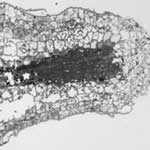 Nanoparticles with at least one dimension of 100 nanometers or less fall in the transitional zone between individual atoms or molecules and the corresponding bulk material, which can drastically modify the physicochemical properties of the material and may generate adverse biological effects in organisms. As the discussion about potentially undesired side effects of engineered nanoparticles heats up, research on toxicological effects of nanomaterials gets increasing attention. Nanotoxicology is quickly being established as a new field, with its major focus on human and animal studies. However, very few studies have been conducted to assess the toxicity of nanomaterials to ecological terrestrial species, particularly plants. So far, the mechanisms of nanoparticle phytotoxicity ? the ability to cause injury to plants ? remain largely unknown and little information on the potential uptake of nanoparticles by plants and their subsequent fate within the food chain is available.
Nanoparticles with at least one dimension of 100 nanometers or less fall in the transitional zone between individual atoms or molecules and the corresponding bulk material, which can drastically modify the physicochemical properties of the material and may generate adverse biological effects in organisms. As the discussion about potentially undesired side effects of engineered nanoparticles heats up, research on toxicological effects of nanomaterials gets increasing attention. Nanotoxicology is quickly being established as a new field, with its major focus on human and animal studies. However, very few studies have been conducted to assess the toxicity of nanomaterials to ecological terrestrial species, particularly plants. So far, the mechanisms of nanoparticle phytotoxicity ? the ability to cause injury to plants ? remain largely unknown and little information on the potential uptake of nanoparticles by plants and their subsequent fate within the food chain is available.
Jul 9th, 2008
 Cells are the basic building blocks of life. The ability to sense and modify intracellular processes is important for, among other things, bettering our understanding of biological processes, developing drugs and evaluating their effectiveness, and modifying cell function. Due to the cell's small size and fragility, probing the cell's interior with high precision is not a simple task. To address this challenge, researchers have developed nanoscale, carbon-based cellular probes ('carbon nanopipettes' or CNP). The CNP consists of a glass capillary lined with a carbon film along its inner surface and terminating with an exposed carbon nanopipe. The probes are fabricated through a process that does not require any assembly and that facilitates quantity fabrication. Depending on controllable process conditions, the carbon tip's diameter may vary from tens to hundreds of nanometers and its length can range from zero to a few micrometers.
Cells are the basic building blocks of life. The ability to sense and modify intracellular processes is important for, among other things, bettering our understanding of biological processes, developing drugs and evaluating their effectiveness, and modifying cell function. Due to the cell's small size and fragility, probing the cell's interior with high precision is not a simple task. To address this challenge, researchers have developed nanoscale, carbon-based cellular probes ('carbon nanopipettes' or CNP). The CNP consists of a glass capillary lined with a carbon film along its inner surface and terminating with an exposed carbon nanopipe. The probes are fabricated through a process that does not require any assembly and that facilitates quantity fabrication. Depending on controllable process conditions, the carbon tip's diameter may vary from tens to hundreds of nanometers and its length can range from zero to a few micrometers.
Jul 8th, 2008
 Archaeological evidence indicates that ancient Chinese and Babylonian civilizations already were using fingerprints to sign legal documents as early as 1000 BCE. As early as 1880, Dr Henry Faulds, an English physician working in Tokyo, published a letter in the journal Nature suggesting the use of fingerprints for identification purposes. Today, fingerprints are still the primary method of identification of criminals although the techniques for fingerprint detection and enhancement have become hi-tech and involve nanotechnology applications. The most problematic of fingerprints are latent prints that are not readily visible and that require development by chemical and/or physical means. Usually, the choice of the technique for fingerprint development is dependent on the composition of latent fingerprints, on the type of substrate and on the ability of the technique to be applied in sequence in the context of the case. A new review paper describes the current status of nanotechnology-based techniques such as application of metal-containing nanoparticles and nano-structured particles to fingermark detection. It concluds that nanotechnology is likely to play a major role in the future to deliver more selective and more sensitive ways to detect and enhance fingermarks.
Archaeological evidence indicates that ancient Chinese and Babylonian civilizations already were using fingerprints to sign legal documents as early as 1000 BCE. As early as 1880, Dr Henry Faulds, an English physician working in Tokyo, published a letter in the journal Nature suggesting the use of fingerprints for identification purposes. Today, fingerprints are still the primary method of identification of criminals although the techniques for fingerprint detection and enhancement have become hi-tech and involve nanotechnology applications. The most problematic of fingerprints are latent prints that are not readily visible and that require development by chemical and/or physical means. Usually, the choice of the technique for fingerprint development is dependent on the composition of latent fingerprints, on the type of substrate and on the ability of the technique to be applied in sequence in the context of the case. A new review paper describes the current status of nanotechnology-based techniques such as application of metal-containing nanoparticles and nano-structured particles to fingermark detection. It concluds that nanotechnology is likely to play a major role in the future to deliver more selective and more sensitive ways to detect and enhance fingermarks.
Jul 7th, 2008
 The use of spontaneous self-assembly as a lithography- and external field-free means to construct well-ordered, often intriguing structures has received much attention for its ease of organizing materials on the nanoscale into ordered structures and producing complex, large-scale structures with small feature sizes. These self-organized structures promise new opportunities for developing miniaturized optical, electronic, optoelectronic, and magnetic devices. An extremely simple route to intriguing structures is the evaporation-induced self-assembly of polymers and nanoparticles from a droplet on a solid substrate. However, flow instabilities within the evaporating droplet often result in non-equilibrium and irregular dissipative structures, e.g., randomly organized convection patterns, stochastically distributed multi-rings, etc. Therefore, fully utilizing evaporation as a simple tool for creating well-ordered structures with numerous technological applications requires precise control over several factors, including evaporative flux, solution concentration, and the interfacial interaction between solute and substrate.
The use of spontaneous self-assembly as a lithography- and external field-free means to construct well-ordered, often intriguing structures has received much attention for its ease of organizing materials on the nanoscale into ordered structures and producing complex, large-scale structures with small feature sizes. These self-organized structures promise new opportunities for developing miniaturized optical, electronic, optoelectronic, and magnetic devices. An extremely simple route to intriguing structures is the evaporation-induced self-assembly of polymers and nanoparticles from a droplet on a solid substrate. However, flow instabilities within the evaporating droplet often result in non-equilibrium and irregular dissipative structures, e.g., randomly organized convection patterns, stochastically distributed multi-rings, etc. Therefore, fully utilizing evaporation as a simple tool for creating well-ordered structures with numerous technological applications requires precise control over several factors, including evaporative flux, solution concentration, and the interfacial interaction between solute and substrate. 
 Subscribe to our Nanotechnology Spotlight feed
Subscribe to our Nanotechnology Spotlight feed





